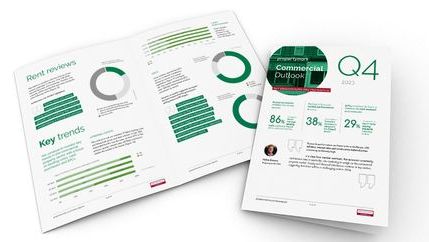
The quarterly Property and Homemover Report is a comprehensive review of the UK property market, created from the most robust property change sources available. It provides a real time review of the UK market, covering 96.6 per cent of all property moves (both sales and rentals).
The report provides a picture of the demographic, regional and socio-economic factors impacting the housing market including:
- Factual data (not modelled or sentiment-based)
- Full market coverage
- Demographic overlay
- Property sales data
- Property rental data
The market has remained lacklustre in 2018 and looks to stay subdued into 2019. On 2019 housing market predictions, NAEA Propertymark is quoted in the report as saying: “We usually see demand spike in the first few months of the year, but the landscape will probably be very different in 2019 as buyers sit on the fence and adopt a ‘wait and see’ strategy until the Brexit deal is complete.”
In 2018 four per cent more properties came onto the market but crucially the number of properties actual reaching exchange has declined by 1.2 per cent. The average property price for exchanges has also risen by 2.1 per cent year on year from £296k to £302k. Cardiff and Bristol are the cities that saw the largest increases in asking price in quarter 4 compared to 2017, up 5.1 per cent and 4.5 per cent respectively.
Seismic change needed
With one in five house sales falling through in England and Wales, TwentyCi say that the need for a seismic change in the buying and selling process is essential. This is something that NAEA Propertymark has been pushing for and taking action on. We hold regular working group meetings with conveyancers, estate agents and representatives from the Land Registry, looking at ways of speeding up the process and reducing the number of fall-throughs. This includes revising the Memorandum of Sale and Property Information Questionnaire.
We have already had success in this area following a Memorandum of Understanding between Propertymark and the Law Society in Northern Ireland, which has brought about a reduction in average transaction times. In December 2017 we also provided a detailed response to the Government's consultation on improving the home buying and selling process.
Crippling lack of affordability
TwentyCi's report shows that in Q4, nearly 60 per cent of all London listings were for rental properties, compared with just 40 per cent in all other major UK cities. This is an ongoing trend in the capital, with affordability inhibiting the purchase market. According to the report 25 per cent of lowest earners in London aren’t even able to buy a property in the lowest 25 per cent price bracket. To do so would mean spending between 70 per cent and 131 per cent of their take-home pay on a mortgage.
For low earners, the cheapest rentals are often out of reach as well, with rent on a property of their equivalent standing costing 57 per cent to 90 per cent of their take-home pay. In the Midlands and the north of England it’s a brighter picture, with the 25 per cent of lowest earners able to either rent or buy property.
The market share of online agents at the end of 2018 stabilised at 7.2 per cent of all exchanges. However, additional analysis shows that online agents are struggling to penetrate south of the Watford Gap.
With consumer confidence low and the Brexit process casting an economic shadow, the performance of the London property market continues to decline. Prices achieved in London against original asking price in 2018 were down 3.73 per cent - the biggest difference of any region, with the West Midlands faring the best at -1.57 per cent.




